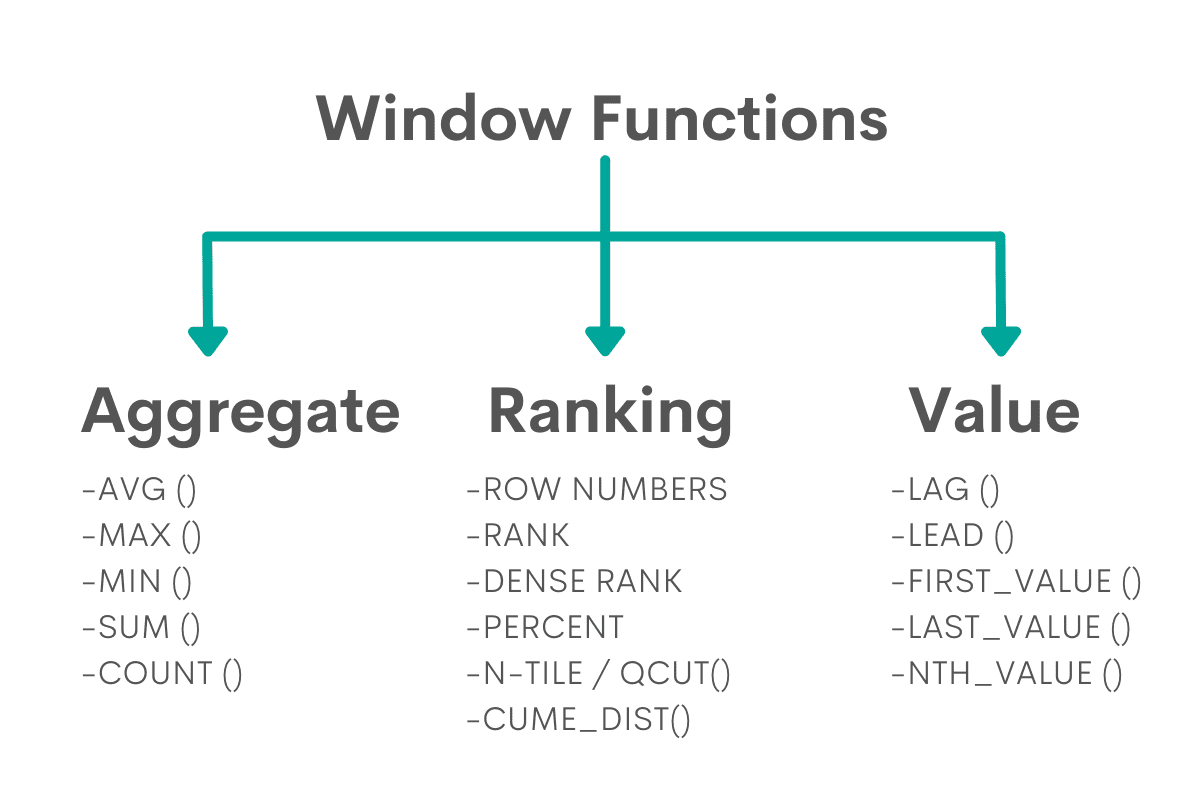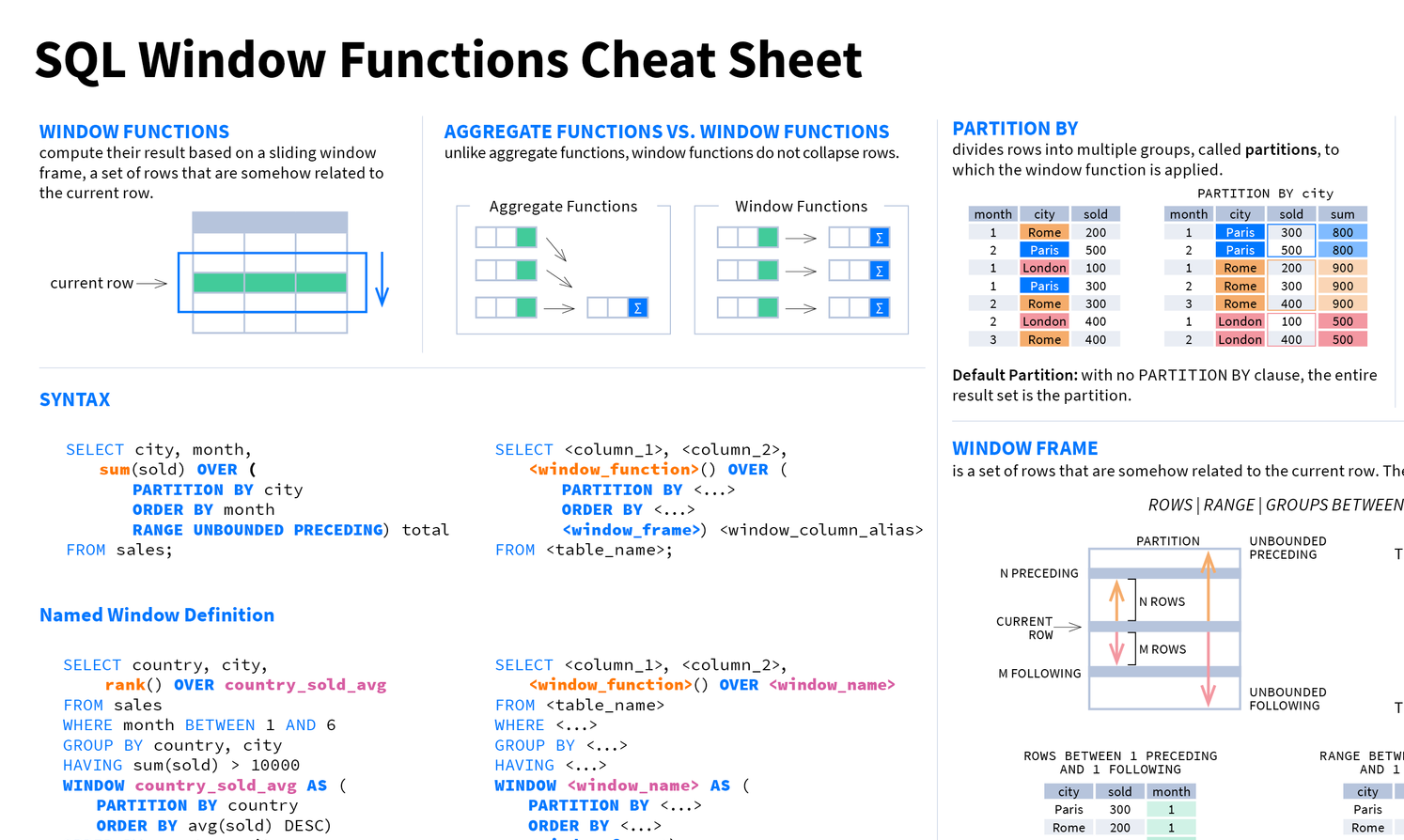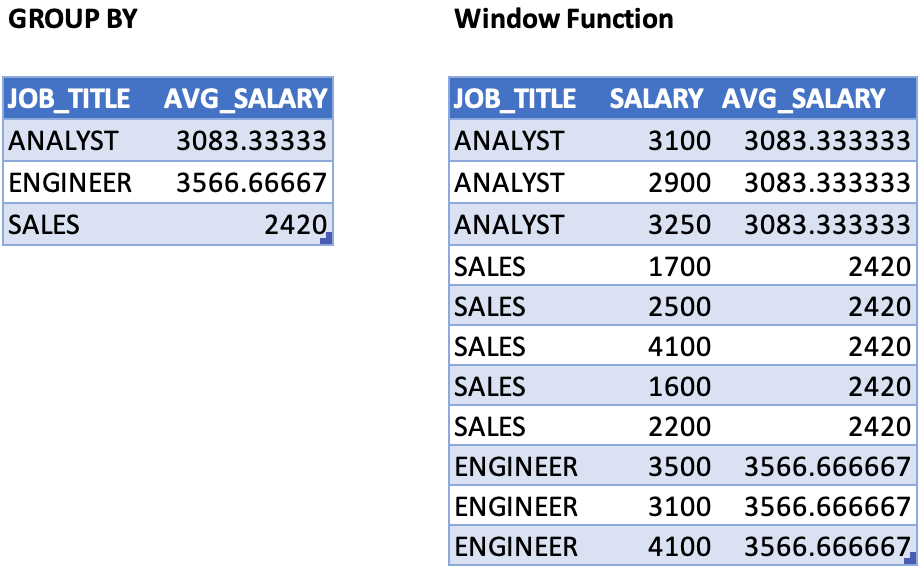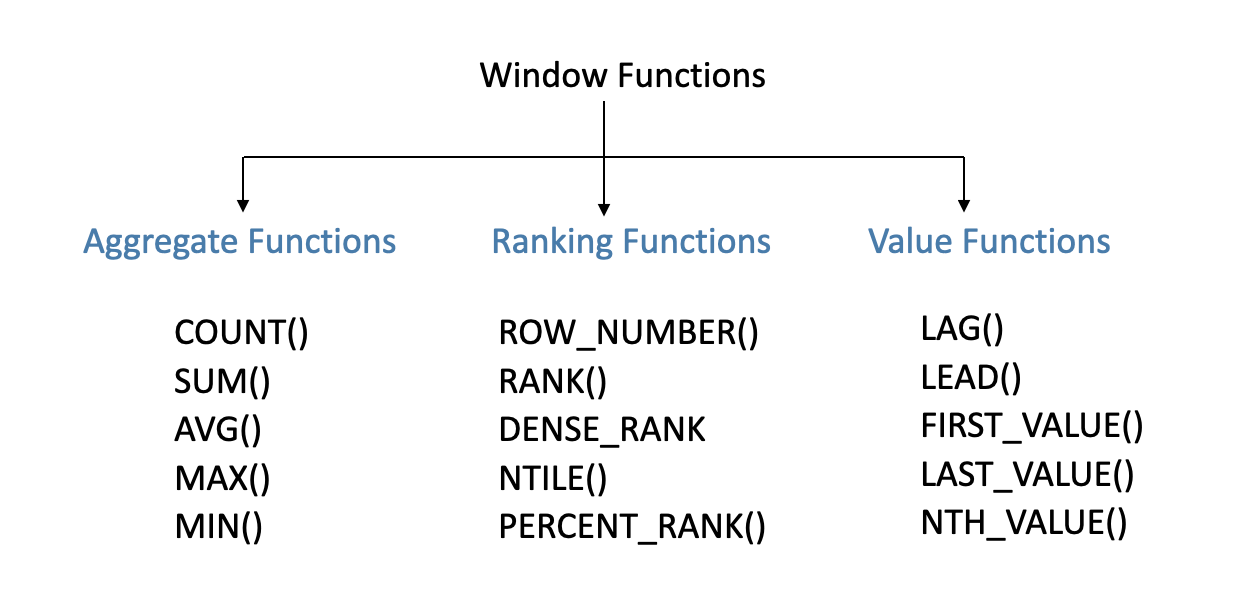Antwort Are SQL window functions efficient? Weitere Antworten – What are the advantages of SQL window functions
SQL window functions are a versatile and powerful tool for data analysis and manipulation. They enable users to perform a wide range of analytical tasks, from ranking and partitioning data to calculating moving averages, cumulative sums, and differences between consecutive rows.Intro to window functions
This is comparable to the type of calculation that can be done with an aggregate function. But unlike regular aggregate functions, use of a window function does not cause rows to become grouped into a single output row — the rows retain their separate identities.Syntax for Window Functions
function(expression|column) is the window function such as SUM() or RANK() . OVER() specifies that the function before it is a window function not an ordinary one. So when the SQL engine sees the over clause it will know that the function before the over clause is a window function.
Can we use the window function in a where clause : Window functions are permitted only in the select list and ORDER BY clause. Query result rows are determined from the FROM clause, after WHERE , GROUP BY , and HAVING processing, and windowing execution occurs before ORDER BY , LIMIT , and SELECT DISTINCT .
Are window functions slow SQL
Window functions can often result in slow queries due to the fact they perform calculations across multiple rows. Here are some tips to optimize your window functions: Reduce the number of rows: If you can, filter your data before applying the window function.
Which is faster between CTE and subquery : Another advantage of using CTEs is improved performance. Since CTEs are temporary result sets, they are stored in memory, which reduces the number of disk I/O operations required to retrieve the data. In contrast, subqueries may result in repeated scanning of the same table, leading to slower query performance.
Unlike aggregate functions, window functions do not reduce the number of rows in the result set, but rather return a value for each row based on the window. Window functions can be used to perform tasks such as ranking, partitioning, calculating running totals, or finding the first or last value in a group.
Window functions increase the efficiency and reduce the complexity of queries that analyze partitions (windows) of a data set by providing an alternative to more complex SQL concepts, e.g. derived queries. Common use cases include: Ranking results within a specific window (e.g. per-group ranking)
Which is faster, CTE or subquery
Another advantage of using CTEs is improved performance. Since CTEs are temporary result sets, they are stored in memory, which reduces the number of disk I/O operations required to retrieve the data. In contrast, subqueries may result in repeated scanning of the same table, leading to slower query performance.RANK() The RANK() window function is more advanced than ROW_NUMBER() and is probably the most commonly used out of all SQL window functions. Its task is rather simple: to assign ranking values to the rows according to the specified ordering.One of the main drawbacks of window functions is that they can be more difficult to write and understand than aggregate functions. Window functions require you to specify the window definition, which can include clauses such as PARTITION BY, ORDER BY, and RANGE or ROWS.
Similar to other calculation statements in SQL, window functions allow you to do a calculation across a set of rows or columns. The difference is with window functions the data will not be grouped into a single output row and will return a value for every row in that window.
Is window function faster than subquery : Performance benefits:
This is because the database engine might need to execute the subquery for each row in the main query. Window functions, on the other hand, can often provide better performance for certain types of calculations, as they do not require multiple passes over the data or complex self-joins.
Why use CTE instead of subquery : Advantages of Using CTE
Since CTE can be reusable, you can write less code using CTE than using a subquery. Also, people tend to follow logic and ideas easier in sequence than in a nested fashion.
Is CTE slower than subquery
Another advantage of using CTEs is improved performance. Since CTEs are temporary result sets, they are stored in memory, which reduces the number of disk I/O operations required to retrieve the data. In contrast, subqueries may result in repeated scanning of the same table, leading to slower query performance.
WHERE clause filters individual rows, whereas the HAVING clause filters groups instead of one row at a time. We cannot use the WHERE clause with aggregate functions because it works for filtering individual rows. In contrast, HAVING can works with aggregate functions because it is used to filter groups.The query is joining a varchar to varchar therefore will do a scan operation. this is quite expensive even with indexes. Why does Mysql use a full table scan for table A when joining another table B I suspect the CTE is keeping a dynaset in RAM on the server, and is therefore much faster.
Are window functions inefficient : Window functions can often result in slow queries due to the fact they perform calculations across multiple rows. Here are some tips to optimize your window functions: Reduce the number of rows: If you can, filter your data before applying the window function.








